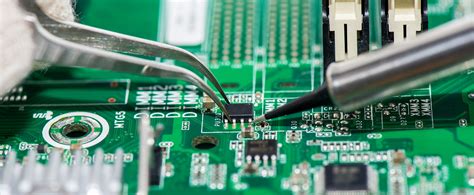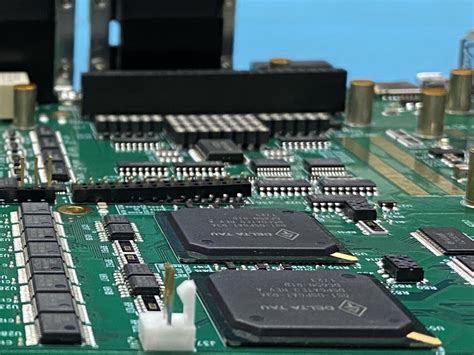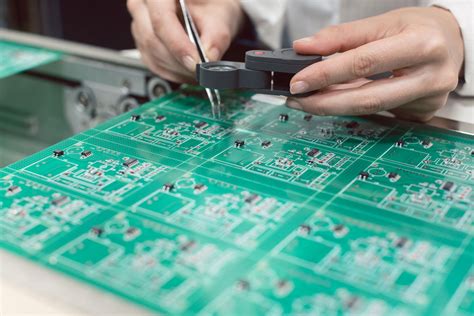High current flex pcb
Advantages Of High Current Flex PCB In Modern Electronics
High current flexible printed circuit boards (PCBs) have emerged as a pivotal component in the realm of modern electronics, offering a multitude of advantages that cater to the evolving demands of contemporary technological applications. As electronic devices become increasingly compact and complex, the need for efficient, reliable, and versatile circuit solutions has never been more critical. High current flex PCBs address these needs by providing a unique combination of flexibility, durability, and performance, making them indispensable in various industries.
One of the primary advantages of high current flex PCBs is their ability to handle substantial electrical loads while maintaining a compact form factor.
This capability is particularly beneficial in applications where space is at a premium, such as in smartphones, wearable devices, and medical equipment. By accommodating high current levels, these PCBs ensure that devices can operate efficiently without the risk of overheating or failure, thereby enhancing the overall reliability and longevity of the product.
In addition to their compactness, high current flex PCBs offer exceptional design flexibility.
Unlike traditional rigid PCBs, flex PCBs can be bent, folded, and twisted to fit into unconventional spaces, allowing for innovative product designs that were previously unattainable. This flexibility not only facilitates the miniaturization of electronic devices but also enables the integration of multiple functions within a single unit, thereby reducing the need for additional components and simplifying the assembly process.
Moreover, the use of high current flex PCBs contributes to improved thermal management in electronic devices.
The materials used in these PCBs are typically designed to dissipate heat efficiently, which is crucial for maintaining optimal performance in high-power applications. By effectively managing heat, high current flex PCBs help prevent damage to sensitive components, ensuring that devices remain operational under demanding conditions.
Another significant advantage of high current flex PCBs is their enhanced durability.
The materials and construction techniques employed in these PCBs are designed to withstand harsh environmental conditions, including extreme temperatures, vibrations, and mechanical stress. This robustness makes them ideal for use in automotive, aerospace, and industrial applications, where reliability and performance are paramount.
Furthermore, high current flex PCBs contribute to cost savings in the manufacturing process.
Their ability to integrate multiple functions into a single board reduces the need for additional wiring and connectors, which not only simplifies assembly but also decreases material costs. Additionally, the reduced weight and size of flex PCBs can lead to lower shipping and handling expenses, further enhancing their economic appeal.
In conclusion, the advantages of high current flex PCBs in modern electronics are manifold. Their ability to handle high electrical loads, coupled with their design flexibility, thermal management capabilities, and durability, make them an ideal choice for a wide range of applications. As technology continues to advance, the demand for efficient and reliable circuit solutions will only increase, solidifying the role of high current flex PCBs as a cornerstone of modern electronic design. By embracing these innovative components, manufacturers can not only meet the current demands of the market but also pave the way for future technological breakthroughs.
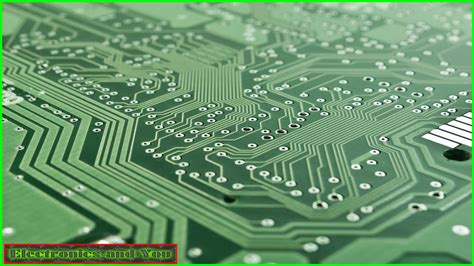
Design Considerations For High Current Flex PCB Applications
When designing high current flexible printed circuit boards (PCBs), several critical considerations must be taken into account to ensure optimal performance and reliability. These flexible circuits, known for their ability to bend and conform to various shapes, are increasingly used in applications requiring the efficient handling of high current loads. As such, understanding the unique challenges and design strategies associated with high current flex PCBs is essential for engineers and designers.
To begin with, one of the primary considerations in high current flex PCB design is the selection of appropriate materials.
The choice of substrate material is crucial, as it must withstand the thermal and mechanical stresses associated with high current applications. Polyimide is a popular choice due to its excellent thermal stability and flexibility. Additionally, the copper thickness on the flex PCB must be carefully selected to handle the desired current load without excessive heat generation. Thicker copper layers can carry more current, but they also add stiffness to the flex circuit, which may limit its flexibility.
Moreover, thermal management is a significant concern in high current flex PCB applications.
As current flows through the circuit, it generates heat, which must be effectively dissipated to prevent damage to the board and surrounding components. Designers often incorporate thermal vias, heat sinks, or thermal pads to enhance heat dissipation. Additionally, the layout of the circuit can be optimized to minimize hot spots and ensure even heat distribution. This involves strategic placement of components and careful routing of traces to avoid areas of high thermal concentration.
Another important aspect of high current flex PCB design is the trace width and spacing.
The width of the traces must be sufficient to carry the required current without excessive voltage drop or overheating. Designers use industry-standard formulas and guidelines to calculate the appropriate trace width based on the current load and the allowable temperature rise. Furthermore, adequate spacing between traces is essential to prevent electrical arcing and ensure signal integrity, especially in high voltage applications.
Transitioning to mechanical considerations, the bend radius of the flex PCB is a critical factor that influences its durability and performance.
A smaller bend radius can lead to increased stress on the copper traces, potentially causing cracking or delamination over time. Therefore, designers must carefully calculate the minimum bend radius based on the thickness and material properties of the flex circuit. Additionally, incorporating strain relief features, such as curved traces or reinforced areas, can help mitigate mechanical stress and enhance the longevity of the flex PCB.
In addition to these technical considerations, compliance with industry standards and regulations is paramount in high current flex PCB design.
Standards such as IPC-2223 provide guidelines for the design and fabrication of flexible circuits, ensuring that they meet the necessary safety and performance criteria. Adhering to these standards not only ensures the reliability of the final product but also facilitates its acceptance in the global market.
In conclusion, designing high current flex PCBs requires a comprehensive understanding of material properties, thermal management, electrical considerations, and mechanical constraints. By carefully addressing these factors, designers can create flexible circuits that effectively handle high current loads while maintaining reliability and performance. As technology continues to advance, the demand for high current flex PCBs is expected to grow, making it increasingly important for designers to stay informed about the latest developments and best practices in this dynamic field.
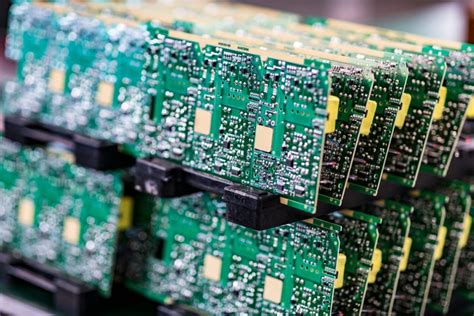
Manufacturing Challenges In High Current Flex PCB Production
The production of high current flexible printed circuit boards (PCBs) presents a unique set of manufacturing challenges that require careful consideration and innovative solutions. As the demand for compact, lightweight, and efficient electronic devices continues to grow, the need for high current flex PCBs has become increasingly prevalent. These PCBs are designed to handle significant electrical currents while maintaining flexibility, making them ideal for applications in industries such as automotive, aerospace, and consumer electronics. However, the manufacturing process is fraught with complexities that must be addressed to ensure the reliability and performance of the final product.
One of the primary challenges in manufacturing high current flex PCBs is the selection of appropriate materials.
The materials used must not only withstand high currents but also maintain flexibility and durability under various environmental conditions. This often involves a delicate balance between choosing substrates that offer excellent thermal and electrical conductivity and those that provide the necessary mechanical flexibility. Polyimide is a common choice due to its high thermal stability and flexibility, but it may require additional reinforcement to handle higher current loads. Consequently, manufacturers must carefully evaluate material properties to ensure they meet the specific requirements of the application.
In addition to material selection, the design of the circuit layout plays a crucial role in managing the thermal and electrical performance of high current flex PCBs.
The layout must be optimized to minimize resistance and heat generation, which can be achieved through strategic placement of traces and components. Wider traces and thicker copper layers are often employed to accommodate higher currents, but these design choices can introduce additional challenges. For instance, thicker copper layers can reduce the flexibility of the PCB, potentially compromising its performance in applications where bending and flexing are required. Therefore, designers must strike a balance between electrical performance and mechanical flexibility, often necessitating advanced simulation tools to predict and mitigate potential issues.
Moreover, the manufacturing process itself poses significant challenges, particularly in terms of ensuring consistent quality and reliability.
The fabrication of high current flex PCBs often involves complex processes such as lamination, etching, and plating, each of which must be precisely controlled to prevent defects. Variations in these processes can lead to issues such as delamination, poor adhesion, or uneven copper distribution, all of which can compromise the performance of the PCB. To address these challenges, manufacturers must implement stringent quality control measures and leverage advanced manufacturing technologies, such as laser direct imaging and automated optical inspection, to ensure precision and consistency.
Furthermore, the testing and validation of high current flex PCBs are critical to ensuring their performance and reliability in real-world applications.
This involves subjecting the PCBs to rigorous electrical, thermal, and mechanical testing to verify that they can withstand the demands of their intended use. Manufacturers must develop comprehensive testing protocols that simulate the conditions the PCBs will encounter in the field, allowing for the identification and rectification of potential issues before the products reach the market.
In conclusion, the production of high current flex PCBs is a complex endeavor that requires careful consideration of material selection, circuit design, manufacturing processes, and testing protocols. By addressing these challenges with innovative solutions and advanced technologies, manufacturers can produce high-quality flex PCBs that meet the demanding requirements of modern electronic applications. As the industry continues to evolve, ongoing research and development will be essential to overcoming these challenges and advancing the capabilities of high current flex PCBs.

Innovations In High Current Flex PCB Materials And Technologies
In recent years, the demand for high current flexible printed circuit boards (PCBs) has surged, driven by the rapid advancement of electronic devices and the need for more efficient power management solutions. As industries such as automotive, aerospace, and consumer electronics continue to evolve, the necessity for innovative materials and technologies in high current flex PCBs becomes increasingly apparent. These advancements are crucial in addressing the challenges associated with heat dissipation, mechanical flexibility, and electrical performance.
One of the primary innovations in high current flex PCB technology is the development of advanced substrate materials.
Traditional materials, such as polyimide, have been widely used due to their excellent thermal stability and flexibility. However, as the current requirements increase, these materials often fall short in terms of thermal management. To address this, researchers have been exploring new materials that offer enhanced thermal conductivity while maintaining flexibility. For instance, the incorporation of ceramic fillers into polymer matrices has shown promise in improving thermal performance without compromising the mechanical properties of the substrate.
In addition to substrate materials, the choice of conductive materials plays a pivotal role in the performance of high current flex PCBs.
Copper remains the material of choice due to its excellent electrical conductivity. However, innovations in copper processing techniques have led to the development of ultra-thin copper foils and advanced plating methods that reduce resistance and improve current carrying capacity. These advancements not only enhance the electrical performance but also contribute to the overall reliability and longevity of the circuit.
Moreover, the integration of advanced manufacturing techniques has significantly impacted the design and production of high current flex PCBs.
Laser direct structuring (LDS) is one such technique that allows for precise patterning of conductive traces on flexible substrates. This method not only improves the accuracy of the circuit design but also enables the creation of complex geometries that were previously unattainable with traditional etching processes. Consequently, LDS technology facilitates the production of more compact and efficient high current flex PCBs, meeting the demands of modern electronic applications.
Furthermore, the implementation of multilayer designs in high current flex PCBs has opened new avenues for enhancing performance.
By stacking multiple layers of conductive traces, designers can achieve higher current densities while maintaining a compact form factor. This approach also allows for the integration of additional functionalities, such as signal routing and electromagnetic interference (EMI) shielding, within the same circuit. The challenge, however, lies in ensuring the reliability of interlayer connections, which has been addressed through advancements in via technology and improved bonding techniques.
As the industry continues to push the boundaries of what is possible with high current flex PCBs, the focus on sustainability and environmental impact has also gained prominence. The development of eco-friendly materials and processes is becoming a priority, with efforts directed towards reducing the use of hazardous substances and minimizing waste during manufacturing. These initiatives not only align with global environmental standards but also contribute to the long-term viability of high current flex PCB technologies.
In conclusion, the innovations in high current flex PCB materials and technologies are pivotal in meeting the evolving demands of various industries. Through advancements in substrate and conductive materials, manufacturing techniques, and multilayer designs, these flexible circuits are becoming more efficient, reliable, and environmentally friendly. As research and development efforts continue, the future of high current flex PCBs promises to be both exciting and transformative, paving the way for new applications and possibilities in the world of electronics.

